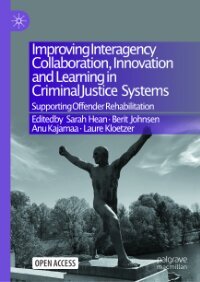By Paul H. Robinson and Jeffrey Seaman
Few claims have won such widespread acceptance in legal academia as the “mass incarceration” narrative: the idea that the rise in America’s prison population over the last half century was fueled largely by the needless and unjust imprisonment of millions of criminal offenders due to punitive changes in sentencing. To many academics and activists, the question is not how accurate the mass incarceration narrative is, but how mass incarceration can be ended. This Article argues the “mass incarceration” narrative is based on a series of myths and, as a result, many proposed reforms are based on a misunderstanding of America’s past and present carceral practices. A more accurate understanding is needed to produce effective reform.The central myth of the mass incarceration narrative is that exceptional and unjustified punitiveness largely explains America’s significant increase in prison population since the 1960s. This explanation overlooks the numerous non-sentencing factors that increased incarceration: a near doubling in U.S. population, higher crime rates, increased justice system effectiveness, deinstitutionalization of the mentally ill, new and tightened criminalizations, worsening criminal offender histories, and more. While this Article makes no attempt at statistical precision, these non-sentencing factors can easily explain most of America’s elevated incarceration compared to the 1960s—a fact in direct conflict with the mass incarceration narrative. Additionally, while some punishments have increased in severity since the 1960s, most of these increases are likely to be seen as moving sentences closer to what the community – and many incarceration reformers – would believe is appropriate and just, as in cases of sexual assault, domestic violence, stalking, human trafficking, firearm offenses, and child pornography, among others.Comparing America’s prison population to foreign countries, as the mass incarceration narrative often does, similarly overlooks the contributions of many of these non-sentencing factors and incorrectly assumes that a higher American per capita incarceration rate always reflects a problem with American, instead of foreign, practice. While America can certainly learn from foreign countries, the reality is that many foreign sentencing practices have sparked chronic and widespread dissatisfaction abroad. It may be that the dispute over incarceration practices is more a dispute between the elites and the community than a dispute between the U.S. and other democracies’ populations.While all decarceration reformers should welcome a clearer picture of America’s incarceration practices, it is hard not to conclude that many mass incarceration myths were created deliberately by those who oppose not only incarceration but punishment generally. For these activists, the mass incarceration narrative is primarily a means toward eliminating punishment, a goal that is difficult to pursue directly because it is so contrary to the views of the general population and even a majority of academia.This Article is not pro-incarceration. It subjects the mass incarceration narrative to much needed scrutiny precisely because reforming incarceration practices is necessary. The criminal justice system should strive to deliver just punishment in the most societally beneficial way, which we believe means increasing the use of non-incarcerative sanctions. The myths of the mass incarceration narrative frequently lead activists to overlook non-incarcerative reforms that deliver just punishment—a tragic failure because such reforms would have much stronger popular support than the anti-punishment or unsophisticated anti-prison reforms now pushed by the mass incarceration narrative.Part I of the Article describes the mass incarceration myths that have become so broadly accepted. Part II reviews the facts of American incarceration practice, which contradict many, if not most, aspects of the narrative. Part III offers our reform proposals, which we believe more accurately address the problems in current incarceration practice. Central to those proposals are the use of creative non-incarcerative sanctions that still deliver punishment proportional to a nuanced assessment of each offender’s moral blameworthiness
U of Penn Law School, Public Law Research Paper No. 24-04




